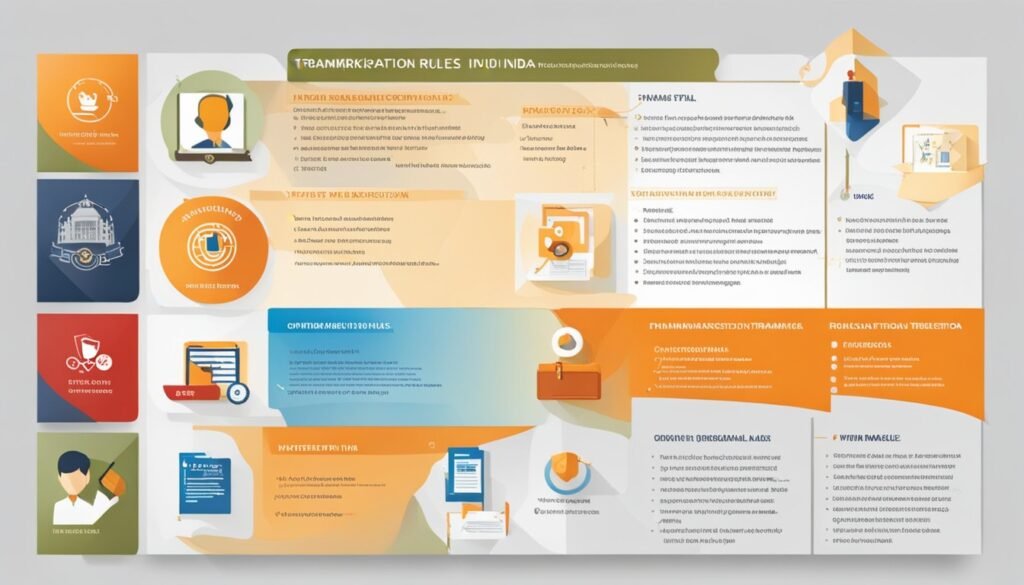The pivotal role of distinguishing goods and services in the market is played by trademarks in the dynamic landscape of intellectual property rights. The Indian Trademarks Act of 1999 establishes a comprehensive legal framework for safeguarding these distinctive marks. However, the eligibility for trademark registration does not extend to all names or marks. Specific prohibitions are enforced to prevent trademarks from causing confusion, deception, or misuse. This article will explore the classifications of names that the Act prevents from being registered as trademarks. It will reference particular sections to offer a clearer understanding of the subject.

1. Generic Names (Section 9(1)(a)):
Trademark registration is not allowed for generic names, which represent common terms used in a specific industry to directly describe the respective product or service. Section 9(1)(a) of the Act is designed to stop the monopolization of these ordinary terms, as doing so might obstruct competition and lead to consumer confusion. For example, any effort to register “Computer” as a trademark for computers would face prohibition.
2. Descriptive Names (Section 9(1)(b)):
Descriptive names directly communicate the characteristics, qualities, or nature of the goods or services they represent. Section 9(1)(b) of the Act prevents the registration of such names in order to uphold equitable competition and to safeguard consumers from being misled. For instance, a name like “Delicious Bakery” for a bakery would be included in this classification.
3. Names Contrary to Law or Morality (Section 9(1)(c)):
Section 9(1)(c) of the Act prevents the registration of names that go against public order, decency, or morality. This provision guarantees that offensive or vulgar terms do not attain legal safeguarding as trademarks, thus upholding ethical standards within the marketplace.
4. Deceptive Names (Section 9(2)(a)):
Names that have the potential to mislead the public regarding the nature, quality, or geographical origin of goods or services cannot be registered, as outlined in Section 9(2)(a). Utilizing a geographical name to falsely indicate an origin, as demonstrated by the case of “Swiss Watches” for watches that are not of Swiss origin, serves as a notable instance of such deception.
5. Word which hurt the religious susceptibilities (Section 9(2)(b)):
Section 9(2)(b) of the Act prohibits the registration of names, marks, or symbols that could cause offense or harm the religious sensitivities of any class or segment of citizens in India. This enactment is in place to guarantee that trademarks do not encroach upon religious sentiments or give rise to discord within the multifaceted cultural and religious tapestry of the nation.
6. Scandalous or obscene matters (Section 9(2)(c)):
Section 9(2)(c) of the Act imposes a restriction on the registration of names, marks, or symbols that have the potential to be scandalous or obscene. This provision has the objective of maintaining public decency and morality within the domain of trademark registration. It hinders the utilization of trademarks that might conceivably provoke offense or dismay among the broader public.
7. Names which prohibited under the Emblems and Names (Prevention of Improper Use) Act, 1950 (Section 9(2)(d)):
The Trade Marks Act of 1999 restricts the registration of names that are prohibited by the Emblems and Names (Prevention of Improper Use) Act, 1950, as stipulated in Section 9(2)(d). This provision guarantees that names, symbols, or emblems safeguarded by the Emblems and Names Act are not utilized or abused as trademarks.
8. Restriction with respect to colour (Section 10):
Although the Trademarks Act of 1999 does not expressly prohibit using colors as trademarks, concerns about ‘colour deprivation’ have led both the Indian Registry and Courts to exercise caution when evaluating trademarks based on colors. This caution has resulted in a rise in legal conflicts. It is important to highlight that the shade linked to a brand goes beyond being just a color label. This differentiation holds significance as it highlights the intricate relationship between color, branding, and the legal structure, ultimately influencing the course of trademark registration and protection.
9. Names Identical or Similar to Well-Known Marks (Section (11)(1)):
Section 11(1)(a) and 11(1)(b) of the Act prohibit the registration of names that closely resemble or are identical to well-known marks, especially when such resemblance might result in confusion or dilution. This provision ensures the protection of the reputation and distinctiveness of established trademarks.
Also Avoid Common Surnames: Common surnames are often not accepted, as they can cause confusion regarding the origin of the goods or services.
Conclusion:
The Indian Trademarks Act, 1999, lists names that can’t be registered as trademarks for fairness and clarity in the market. While this article provides an overview of the prohibitions, it’s important to note that the Act operates on a case-by-case basis, and legal interpretations may evolve over time. By adhering to these regulations, the Act strikes a balance between encouraging innovation and safeguarding consumer interests.
This article is for educational purposes only. Consult a legal advisor for specific concerns.





